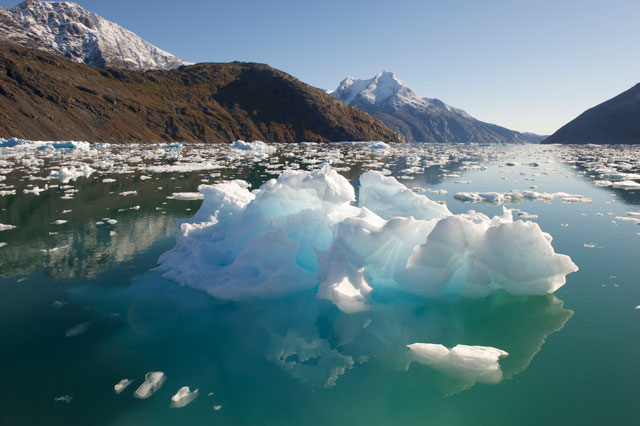
On February 25, temperatures at the North Pole rose above freezing.
While a single weather event is never solely attributable to anthropogenic climate disruption (ACD), climate scientist Sarah Myhre tweeted about weather anomalies such as this: “Single weather events can also be used as exemplars — good examples — of what changes are characteristic of climate change, including heat events, fires, extreme storms, winter warming, the changing of seasonal timing, the redistributions of ocean ecosystems.”
Amelie Meyer, a researcher of ice-ocean interactions with Norway’s Polar Institute told The Age that to have these kinds of warm temperatures at the North Pole in February is “just wrong,” adding, “It’s quite worrying.”
Scientists around the globe are stunned by the event. Daily mean temperatures across the region were comparable to those usually seen in May. February 23 saw temperatures in northern Greenland at 43°F. The average high temperature there for that month is -20°F.
To see more stories like this, visit “Planet or Profit?”
Climate science lecturer Andrew King at the University of Melbourne told The Age that these exceedingly warm temperatures at such high northern latitudes during the dead of winter “are really extreme.”
Why Is Greenland Warmer Than Europe?
King went on to add that “parts of Greenland are quite a bit warmer than most of Europe.” And he wasn’t the only climate scientist scratching his head.
On February 24 climate scientist Zack Labe tweeted: “Cape Morris Jesup (#Greenland’s northernmost observation station) is now reporting temperatures well above freezing today… +6.1°C at the latest observation! Crazy!”
The average high temperature for that location in February is -20°F, making Friday’s reading a stunning 63°F warmer than average. This would be the equivalent of Denver seeing a 112°F day in February.
Across much of the rest of the Arctic in late February, these July-like temperatures — more than 45°F above normal — covered tens of thousands of square miles.
In another shocking development, Alaska’s Bering Sea lost a full one-third of its ice in only eight days.
All of these events underscore a warning issued by the National Oceanic and Atmospheric Administration in its 2017 Arctic Report Card.
The report, which was published in December, warned “the Arctic environmental system has reached a ‘new normal’, characterized by long-term losses in the extent and thickness of the sea ice cover.”
The NOAA scientists emphasized that recent warm temperatures are no aberration. They are part of a trend toward a radically different planet.
NOAA’s report concluded that the “Arctic shows no sign of returning to [the] reliably frozen region of recent past decades.”
Join us in defending the truth before it’s too late
The future of independent journalism is uncertain, and the consequences of losing it are too grave to ignore. To ensure Truthout remains safe, strong, and free, we need to raise $43,000 in the next 6 days. Every dollar raised goes directly toward the costs of producing news you can trust.
Please give what you can — because by supporting us with a tax-deductible donation, you’re not just preserving a source of news, you’re helping to safeguard what’s left of our democracy.